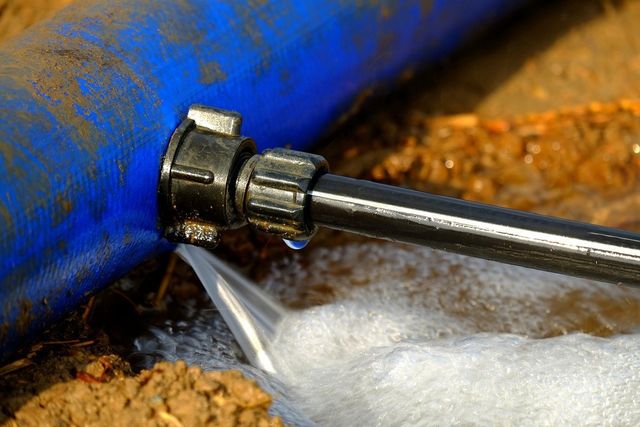Everybody maintains his or her own rationale when it comes to Locating water leaks.

Early detection of dripping water lines can reduce a possible catastrophe. Some tiny water leakages may not be noticeable.
1. Examine the Water Meter
Inspecting it is a surefire means that helps you find leaks. If it moves, that shows a fast-moving leak. This means you might have a slow leak that can also be underground.
2. Inspect Water Intake
Evaluate your water expenses and also track your water consumption. As the one paying it, you ought to observe if there are any kind of disparities. If you spot sudden changes, despite your consumption being the same, it indicates that you have leakages in your plumbing system. Bear in mind, your water costs must drop under the exact same array monthly. An abrupt spike in your bill suggests a fast-moving leakage.
At the same time, a constant increase monthly, despite the very same habits, shows you have a slow leak that's also slowly escalating. Call a plumber to thoroughly check your property, specifically if you feel a cozy area on your flooring with piping below.
3. Do a Food Coloring Test
When it comes to water usage, 30% comes from commodes. If the shade somehow infiltrates your bowl during that time without flushing, there's a leakage in between the container and bowl.
4. Asses Outside Lines
Don't neglect to examine your exterior water lines too. Must water permeate out of the connection, you have a loosened rubber gasket. One tiny leak can throw away tons of water as well as spike your water expense.
5. Inspect and also Examine the Scenario
Homeowners ought to make it a habit to inspect under the sink counters and also even inside closets for any type of bad odor or mold development. These 2 red flags show a leakage so prompt interest is needed. Doing regular evaluations, also bi-annually, can conserve you from a major trouble.
If you know your home is already old, maintain a watchful eye on your heaters, tubes, pipes etc. Check for discolorations and also weakening as most pipelines and home appliances have a life expectancy. They will certainly also naturally weaken as a result of deterioration. If you suspect dripping water lines in your plumbing system, do not await it to escalate. Call a specialist plumber right now so you do not wind up with an awful mess in your house.
Early detection of dripping water lines can reduce a possible disaster. Some little water leaks may not be noticeable. Inspecting it is a surefire means that aids you find leakages. One tiny leak can throw away heaps of water and spike your water bill.
If you presume leaking water lines in your plumbing system, do not wait for it to intensify.
How to Know If Your Home Has a Hidden Leak
Water Meter Reveals Inexplicable Water Usage
If you’d like to test whether or not there’s a leak somewhere in your home, you can do this using your water meter. Here is how to conduct the test:
Don’t use any water in your home for at least 30 minutes; this also means not turning on faucets or water-using appliances.
Go outside, and check your water meter for activity.
If your water meter shows that there was activity, even though no one was using any water, this proves that there is a leak in your home.Visible Mold or Mildew Growth
Leaks behind walls create moist, dark environments that allow mold and mildew to grow and thrive. Eventually, you might see mold growth forming on the wall closest to a hidden leak.
If mold is growing in an area that receives a high amount of moisture, such as a bathroom, it may simply be an indication that better ventilation is needed. However, if you see mold growth on a wall or the ceiling in an area where you would not expect, you probably have a hidden leak.
Musty, Mildew Odor
Sometimes you might not be able to see the mold or mildew that is growing as a result of a leak. However, the smell can give the problem away just as easily. If you catch a whiff of something musty, there’s a good chance that old water is collecting somewhere in your home that you can’t see.
Stained/Warped Walls, Ceilings, or Floors
When your home soaks up water, a variety of red flags can become visible, including ceiling stains, bubbling drywall, warped walls, and sagging floors. While these issues can be caused by excess humidity, they can also be signs that a pipe or plumbing connection has started leaking behind your walls.
Inexplicably High Water Bill
After a while, you get a general sense for what your water bill should be. If you own a pool or sprinkler system, your bill will tend to be higher during summer. However, if you receive a water bill that seems especially high, and you can’t figure out what caused it, then you may have a hidden leak somewhere that’s increasing your bill.
https://www.plumbingjoint.com/blog/2019/july/how-to-know-if-your-home-has-a-hidden-leak/

I have been very interested by Locating water leaks and I am hoping you enjoyed the entire blog post. Sharing is nice. You just don't know, you may just be doing someone a favor. Thanks a lot for going through it.